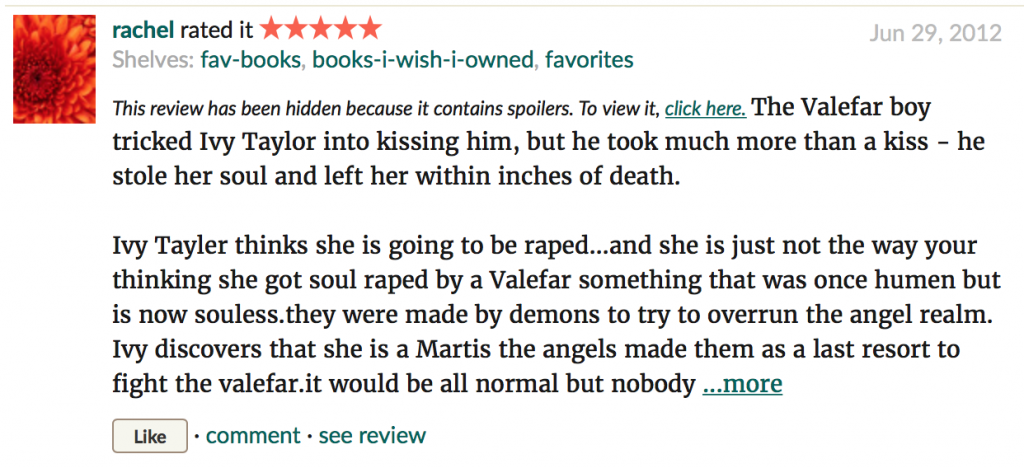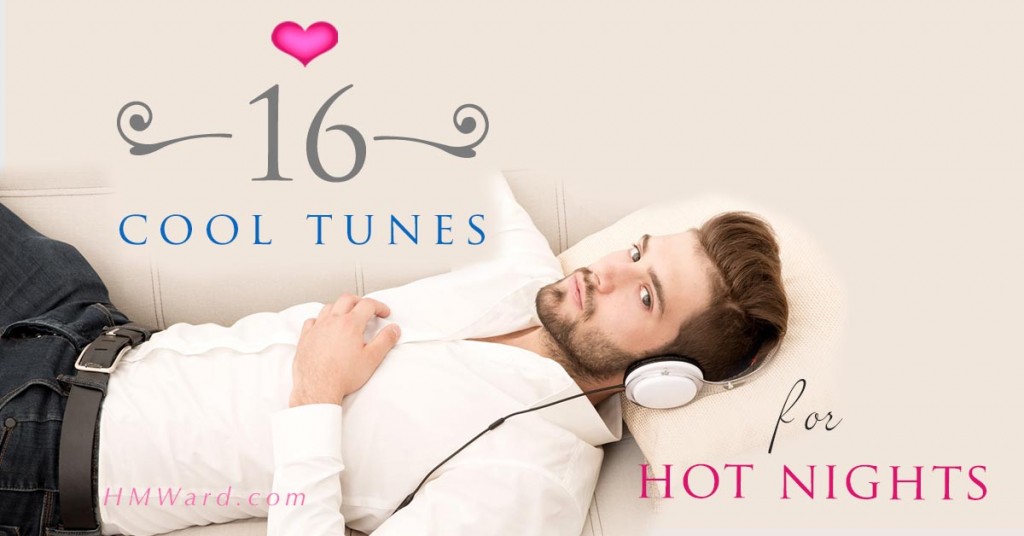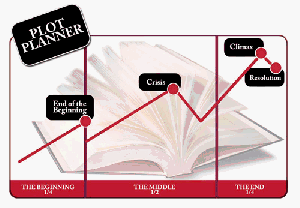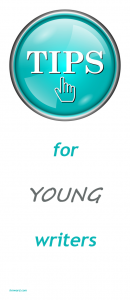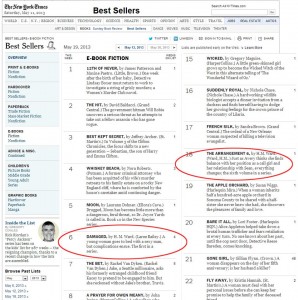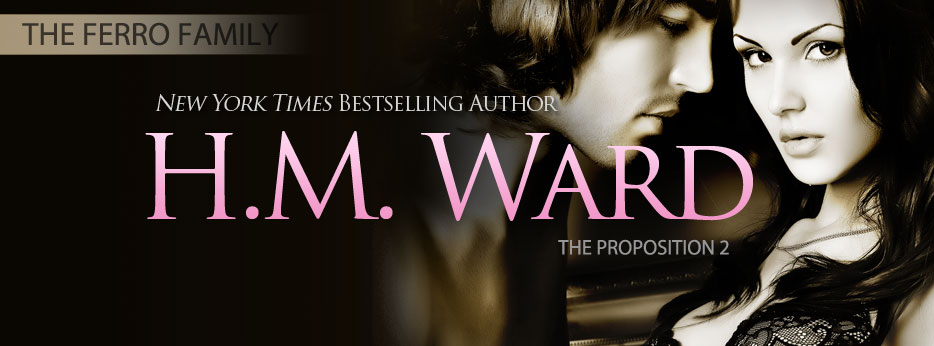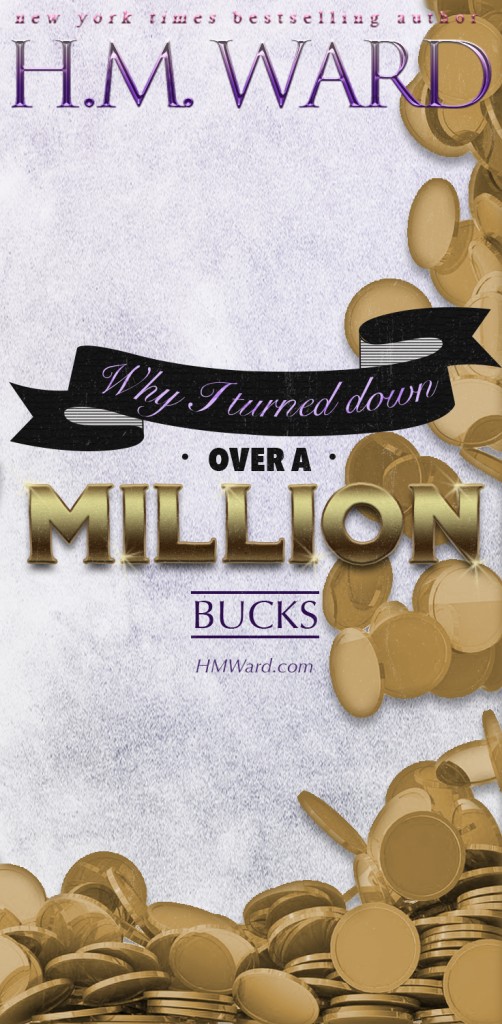 So, I ranted a little bit on KindleBoards and figured I should post it on my own blog at some point. So here we go…
So, I ranted a little bit on KindleBoards and figured I should post it on my own blog at some point. So here we go…
I posted an announcement on my facebook page last night and had several ppl nudge me to post it over here. So here we go. Plus I’m adding more info, b/c info is king and it’s good to be king. bwuhahaha.
Over the past year I’ve been offered over 1.5 million bucks in advances offered by huge publishing houses. I told them to show me a marketing plan that knocks my socks off and I’d consider their offer. I had this notion that they knew what they were doing and could do it better than I could. They said they had all these ideas and they’re gonna blow my mind, which was a requirement for the deal, b/c the pay was too low.
About the money – if you have a book that hits #1-10 on the Kindle store, tons of people have the mistaken notion that it’s gonna blip and fall and you’re fun in the sun will end…unless a trad pub picks you up.
It’s math time! A book in the top ten sells around 5-10K copies per day. Let’s take the average and give the book some wiggle room and say it’s selling 7K copies a day @ $2.99. In 7 days you’ll have made (net, not gross) over $100,000. So BIG TRAD HOUSE offers you $200,000 for a three part series.
‘Sign here,’ they say. ‘Sign fast! You want to strike while the irons hot.’ ‘A bird in the hand is worth 2 in the bush.’ ‘It’s a sure thing and if you don’t sign, then you could loose everything.’ <–They actually said all the crap to me, and its crap. If the book nets $100K in a week, what will it do next week? What about next month? What about next year? Never mind those other 2 books. Bad deal.
The most recent offer was for a high six figure deal on my next novel, on spec, sight unseen from one of the big 5. I gave the same terms – show me a kick *ss marketing plan and I’ll consider it. They were excited and on it! They were going to wow me. Like I was gonna be so wowed that I’d die of the wowness. True story.
Dude, the marketing plan I got back was the equivalent of, ‘we’re gonna do stuff.’ Their email list – yeah, they don’t personally have one, but this archaic place does – had 2K people on it. That was the bulk of their plan.
My email list has over 30K ppl on it and I do a ton more stuff than they presented. There’s a post in here about my release day marketing plan, most of which is free and time consuming. I still do that. It’s listed in here with details.
THEY DON’T DO THAT MUCH.
I said no. And laughed. A lot. It was so weak.
My point – do NOT think that they have any clue what they are doing, because they do not. There is a marketing method that is called ‘see what sticks’ where you take a plate of spaghetti and toss it at the wall. There’s no planning, no nothing. Just take it and throw. That is what the big houses are doing. Every marketing plan had that element of ‘fate’ and hoped that I would be the lucky piece of pasta that stuck.
Screw that. I want someone who knows what they’re doing. Apparently, that’s me. I’m good at selling intangible goods. I know that, but I assumed there would be better things that I hadn’t thought of. I still consider myself ‘green.’ Yeah, it turns out that I’m not.
Everything you do should have a purpose. All ads should be directly targeting your demographic for your book. ‘Toss it at the wall’ is very costly and honestly, it gets you a very poor ROI (return on investment).
Here are some of the highlights of my Indie career since I started. March marks my 3 year Indie anniversary. I was not previously published. I started at zero. I was a photographer, with a theology degree that cost a frickin fortune.
•I sold 4 MILLION+ books since 2011.
•DAMAGED: THE FERRO FAMILY was the #1 bestselling Indie Kindle Direct Publishing and CreateSpace title of 2013.
•DAMAGED: THE FERRO FAMILY was the #14 bestselling Kindle title on Amazon of 2013.
•In 2013 alone I had 11 different titles on the NEW YORK TIMES bestsellers list.
•I’m a NYT, WSJ, USAT bestselling author.
•THE ARRANGEMENT series sold over 1 million copies in 2013. Dude, they’re serials. People hate short books. Riiiight. 
•I’ve been a top 100 Amazon author every month of 2013, often in the top 10.
•In 2013 I released a new title about every 2.5 weeks.
•My formal education is in theology.
•My titles tend to focus on elements of the human condition such as poverty, hope, grief, and loss.
•I had multiple titles hit #1 on Amazon, Barnes & Noble, and other sites.
•DAMAGED: THE FERRO FAMILY was in the Amazon top 100 kindle titles for over 100 days in 2013.
•H.M. Ward owns H.M. Ward Press (formerly Laree Bailey Press). Other indies thought that I was trad b/c of my press. I’m not.
•Prior to this I was a nationally acclaimed professional photographer. I shot the covers for Demon Kissed 1-5 and Catalyst before I retired from photography in Fall 2012. Until then, I was a FT photog and a PT writer.
I started by using facebook and only facebook to connect to readers outside of my social circles. There are other ways to do that, but I’m a big believer in don’t wait for them to come to you.
My first book cost me $125 to produce. I was butt poor from a theology degree that cost well over six figures. I didn’t have extra money to mess around with.
I had a big NY agent for my 1st book and was looking at the traditional route. I told her to pull it–I wanted to publish it myself. (Many thanks to Joe Konrath and his awesome blog).
I work about 80 hours a week. I have two assistants that help me manage paperwork. I just hired them b/c I had been going nuts trying to do everything myself. Hubby helps me with all the numbers stuff and when I get sick (I’ve been fighting an illness for the past 3 years) that knocks me on my *ss periodically.
If you forget everything else in this post, remember this:
If you don’t have the gall to believe in yourself and your work, no one else will.
Bring it.
Own it.
And don’t worry about mistakes, because they’re the stepping stones to success. I notice I never say ‘I failed’ – I say ‘well, I jacket that up,’ and try to figure out where it went wrong so I can fix it. Failure is an excellent teacher. Learn from it and try again.
I feel like crap today, so forgive my typos and such. I wanted to take the time to share this b/c stuff like this helped me. I’d see ppl’s posts about how they were getting ahead, buying a laptop with their earnings, or read Joe’s blog and seeing his income, and it made me keep going. I’m glad I did.
Being an Indie completely and totally rocks.
–and this was a follow up–
Someone asked how I end up working 80 hours a week:
It’s more than 80 hours. I work at least 12 hours a day, 7 days a week when I’m home. The only way I stop working is for me to go on vacation. But anyone who has worked for themselves knows that. I try to stop at 5pm, but it never happens. I usually try to stop and 5 and it takes me until 9 to get stuff done.
3 hours or less are spent writing per day.
The rest gets eaten up by email, fb, twitter, fan interaction, vendor relations/ discussions, launches (on launch day all I do is the stuff on that page I wrote a while back. It takes ALL day. I can’t do anything else on those days.)
I think interaction is important. Ive always thought that. If they took the time to write me something, I want to write them back. Its time consuming.
The rest of the time is spent making covers, blurbs, marketing strategy, reworking sales copies if they flopped, analyzing stats and seeing what can be changed to function better. This year I added book fairs to my to do list, so I’ll be at BEA, RWA, London, and RT. Audiobooks, listening to narrators, making the covers for those, answering interview requests. Planning marketing and coordinating things between ads. Making social media pics and posting.
That’s the stuff that stands out. Hubby does stats on sales and prepares paperwork for the boring side of a business.
As in any other person who is self employed, I spend the least amount of time doing the fun part. In this case, writing. I like making covers too.
I work from the time I wake up until the time I go to sleep. I did that when I had the photography studio too. Im not sure if Im a workaholic or if I work harder b/c I work for me.
I still spend a few hours every day playing with my kids and hubby. I eat meals with them, and work at home, so they can come talk to me when they need me. I don’t expect to maintain this pace forever, but I’ve been doing it so long I’d be lost working 40 hours a week.
Im hoping my assistants will take over the redundant work (eg cover made for ebook, paper, acx-the assistant makes the duplicates after I do the ebook design) and that will cut my workload by about 10 hours a week, which would be great. I’ll end up writing instead. hahaha.
Someone asked about paper only deals – NO ONE IS INTERESTED. I thought that was insane, but it’s not. It lines up with Hugh’s report. Paper is not where the money is at- ebooks are. I made the NYT list this week. Ebook only rank was #7 and Ebook and paper combined was #8. No preorder. Minimal paper sales – a few hundred. That also lines up with what Hugh’s report. Which makes me think, there isnt a lot of money in paper and the risk is greater than the reward. I am trying to do paper distribution myself. It’s too early to say what will happen. I’ll let you know, but I’m thinking there is a reason why the trad pubs are backing off of paper sales. It’s not arbitrary, despite their other actions I think they’re right about paper.
If Indies stopped chasing paper, if they stopped thinking that paper would be the difference, well, that would be major.
There’s one other huge thing that I wanted to mention, and that’s the fans. Being indie means I can release faster and for less. Can you imagine a trad pub trying to release a book every other week? Or even once a month? The fans LOVE having so much to read and not waiting very long. Plus I have the option to put anything I want on sale, whenever I want. These aren’t minor facets of the big picture, they’re huge. I’ve also dabbled with fans actually influencing the story line. That has been amazing. They got to chose major things – did this person sleep with this person, is this person gay, should the dark nature of a character be toned down, etc.
An offer has to be really attractive to risk my fans, and it is a risk. The publisher could totally derail things and p*ss off my fan base. For me, that’s a huge risk and it’s just not worth it. Notice I said risk several times. You’re risking everything you’ve made when you hand your stuff over to someone else.
A couple of you guys said you’ll be at RT and BEA. Totally come say hi!!!
Related Posts on Self Publishing and Indie Marketing
(reposted from old blog)
 Guest post by someone who has a very unique perspective on publishing, my husband–Mike Ward. After a decade in this industry and sleeping with the marketing wizard (tee hee!) he watched me sell over 20 million books along with some other cool stuff and has a very unique perspective on the current pub industry situation.
Guest post by someone who has a very unique perspective on publishing, my husband–Mike Ward. After a decade in this industry and sleeping with the marketing wizard (tee hee!) he watched me sell over 20 million books along with some other cool stuff and has a very unique perspective on the current pub industry situation.
 With recent talk about the perm ARC list and what it takes to be shoulder tapped, I thought I’d take the time to dish out the dirt on what makes a reviewer go from okay to AMAZEBALLS!
With recent talk about the perm ARC list and what it takes to be shoulder tapped, I thought I’d take the time to dish out the dirt on what makes a reviewer go from okay to AMAZEBALLS!

